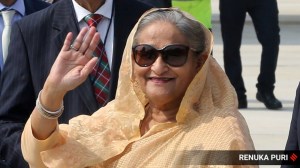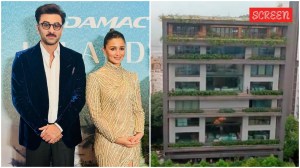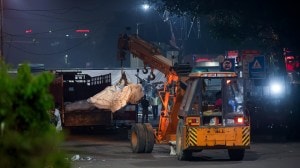Once an Asian force, now a spent force
DECEMBER 22: The first Asian Games in Delhi in 1951. Two football powers of the continent, India and Iran, play the final. The short, dark...

DECEMBER 22: The first Asian Games in Delhi in 1951. Two football powers of the continent, India and Iran, play the final. The short, dark Indian Mewalal, with a lethal left foot, is the dangerman and the Iranian defenders are keeping a very close eye on him. Yet, the agile bare-footed striker deceives them and scores. That is the only goal of the match and India are officially the super-powers of the continent.
Now consider another image, this time in 1998 at Bangkok. India are playing in the Asian Games after a gap of 12 years. The team has big names like Baichung Bhutia and IM Vijayan, whose individual brilliance has been noticed and appreciated by top coaches of Asia. India manage to beat only Nepal, losing all their other matches. Yet, the performance is praised and it is agreed that the team has done the country proud.
That should sum up India’s football history. Never a force in the world although a power in Asia once; but nothing more than a spent-force now.India’s current football activities arerestricted mainly to domestic meets with a few futile attempts in the World Cup or Olympic qualifiers thrown in between.
At a time when things are bleak and looking bleaker, the happier memories of the past might still bring a smug smile to the blank faces.India’s football fortunes can be traced basically since Independence. Prior to that, there were just some stray moments of joy in the first half of the century.
In fact, the first time India had reason to rejoice was in 1911, when Mohun Bagan became the first Indian team to win the IFA Shield in Calcutta. Bagan beat East Yorkshire Regiment 2-1 in the final to leave the British Empire shocked. The win was seen as a victory of the suppressed over the oppressors. That was also one of the earliest examples of sport in the country being viewed through political glasses.
Mohammedan Sporting went on to win the Shield in 1936 before doing an encore in the Durand Cup in 1940. The tournament, the second oldest in the world after the FA Cup, shifted from Shimlato Delhi that year. However, the Durand Cup of ’40 become known for an entirely different reason. Captain Harnam Singh, an Indian referee, was allotted the match. Sergeant officers Oliphant and Greene, both Britishers, refused to officiate as linesmen. They had to be threatened with court-martial for the match to be held and Harnam Singh became the first Indian to officiate as a referee.
In the post-Independence era, the first big event was of course the Asian Games triumph in 1951 under the captaincy of Sailen Manna. India, free from shackles, had made a point, at least in Asia.
They repeated the feat in 1962 at Jakarta, this time under Chuni Goswami. The team had all-time legends like Peter Thangaraj, PK Banerjee, Jarnail Singh, Ram Bahadur, Ethiraj, Balaram, Yusuf Khan. For Syed Abdul Rahim, it was the second Asian Games gold as India’s coach.
The golden age of Indian football started around the mid-fifties and continued till the mid-seventies. In this period India has some memorable wins, and a fewatrocious performances as well. In the Melbourne Olympics in 1956, India finished fourth, losing to Bulgaria in the third-place play-off. They beat Australia 4-2 but lost 1-4 to Yugoslavia. That was definitely an improvement from 1952 when Yugoslavia beat India 10-1. Four years later in Rome, the bare-footed warriors held France 1-1 and India were being looked upon with great interest. India could never get past the qualifiers after that.
Then came the Asiad triumph followed by a second position in the Asia Cup two years later in Tel Aviv. An Asian Games bronze in 1970 and finally, the last international win of note in 1974 when the juniors jointly took the Asian Youth Cup title with Iran. That’s when the downslide began.
However, things started progressing on the domestic front. The Federation Cup, a club-level knock-out tournament was started in 1977. In 1982, India got its first international meet in the Jawaharlal Nehru Cup. Leading countries sent their teams to unknown India and the fans got to see afew of the top names in action. However, as years went by, B-grade nations started sending their C-grade teams. Then in 1996, the first semi-professional National League was held.
Meanwhile, the foreign flavour had entered the domestic scene with Iranians Majid Baskar and Jamshed Nassiri finding India an ideal place to display their talent. Although many Africans made a fortune for themselves later, including Chima Okerie who remains one of the most prolific scorers, the Iranians are still considered among the best overseas talents seen in the country.
The ’90s did see a revival of sort with IM Vijayan, Baichung Bhutia and others giving hints of checking the slide. India and the Indian clubs continued to lose, but were not always disgraced. East Bengal’s 6-2 win over Iraq’s Al Zawra in Calcutta in 1992 stands out among them. More recently, East Bengal’s one-goal win over Japan’s Verdy Kawasaki in 1997 in Calcutta, also provides hope for Indian football. Although India languish beyond 100 in the FIFArankings, the country has been putting up a fight against better teams lately. That is perhaps the silver lining to a rather bleak horizon.
Of course, another is Baichung Bhutia, now playing in British second division, who is surely among the better strikers in Asia.
TOMORROW:ATHLETICS
TEN MEMORABLE MOMENTS
(1) 1911: Mohun Bagan beat East Yorkshire Regiment 2-1 to win the IFA Shield Trophy. Bagan becomes the first Indian team to beat an English side.
(2) 1951: The Indian team led by Sailen Manna wins the Asian Games gold medal in Delhi. Short-statured Mewalal is the star for India scoring in all the matches. He punched in the match-winner against Iran in the final which India won 1-0.
(3) 1956: India finish fourth at the Olympics, losing 0-3 to Bulgaria in the play-off for the bronze. This remains as India’s best-ever showing at the Olympic Games.
(4) 1960: Rome Olympics. India lose to Hungary in their first game, but hold France 1-1 in theirnext with PK Banerjee scoring. This perhaps remains India’s best result against any highly rated team.
(5) 1962: Another Asian Games gold for India, this time under Chuni Goswami’s leadership in Jakarta. India beat South Korea 2-1 in the final with PK Banerjee and Jarnail Singh scoring.
(6) 1964: India surprised everyone by ending as the runners-up to hosts Israel in the Asia Cup. After qualifying from West Zone without playing a single match as all the other teams withdrew, India beat South Korea and Hong Kong in the man draw before losing to Israel in the final.
(7) 1970: India, already on the downslide, manage to win the Asian Games bronze in Bangkok. After losing to Burma in the semi-final, India beat Japan in the play-off for the third place.
(8) 1974: Again in Bangkok, the Indian junior team gave hints of talents in the making by jointly winning the Asian Youth Championships with Iran.
(9) 1996: An old dream is fulfilled. India gets its firstNational Football League. Although it is semi-professional in nature, big money is involved. The teams are promised a hefty appearance fee along with other perks by All India Football Federation. JCT, the eventual winners, pocket a cheque for Rs 35 lakh.
(10) 1999: Baichung Bhutia joins Bury, a second division team in the English League. He becomes the first Indian ever to play in the English League. Skeptics sit up and take notice of the Indian talent as the Bury media is thrilled with their town’s newest resident.





- 01
- 02
- 03
- 04
- 05


























